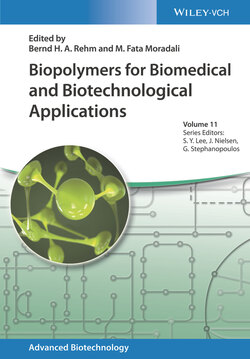Читать книгу Biopolymers for Biomedical and Biotechnological Applications - Группа авторов - Страница 10
1.1 Introduction
ОглавлениеBiocompatibility is a concept that, in one form or another, has existed since the dawn of medicine. At the base of Vesuvius in ancient Rome was the house of a surgeon, home to an impressive collection of medical instruments that were preserved by ash when the mountain exploded. Without a doubt, patrons of the ancient surgeon subjected themselves to these devices with the expectation and trust that they would be getting better – not worse – due to the treatment they received. While biocompatibility has not always been explicitly defined through history, the safety of a tool in a doctor's hand is central to the mission of the doctor. Following the industrial revolution, instruments have become mass‐produced and marketed as effective tools for the practice of medicine, making doctors rely on the diligence of the manufacturer to ensure patient safety. Concurrently, our knowledge of toxicology has expanded through experience, and medical journals have become widely available to share clinical experiences. These platforms have been and are currently successfully used to notify doctors and also the public about medical instruments thought to be safe, but which actually did more harm than good, and discuss options for mitigating the risks associated with the use of these devices.
To protect patients from being harmed by medical devices, which for one reason or another might be unsafe due to negligence on the part of the device manufacturer, medical device safety has become regulated. These regulations require medical device manufacturers making a device or product to demonstrate that what they are producing performs appropriately when used as intended. Past experience and modern toxicology have identified what sorts of health risks are associated with the use of a given medical device. The most modern and comprehensive overview of biocompatibility is the suite of documents that make up the international standard ISO 10993; the first document in the series, ISO 10993‐1, provides the high‐level framework for evaluation of biocompatibility as a whole, while the other documents in the series explore specific topics in more detail.
The modern concept and definition of biocompatibility is the ability of a medical device (or material) to “perform with an appropriate host response” when used as intended. This means that the device or material should not cause an unacceptable biological risk when used, taking into account the nature of use in terms of contact site and duration, as well as the potential benefit of using the device. ISO 10993‐1, Annex A, lists several key biological risks associated with specific types and durations of patient contact. As the contact duration goes up, and the devices or materials become more invasive, the types of potential risks multiply. For example, a device that is used on an intact skin is not very invasive, and therefore the associated risks are minimal; the skin is an organ effective at protecting the body from our natural environment that is often replete with biological risks. In contrast, consider a neurological stent; this invasive device is in permanent contact with brain tissues. For such a device, risks range from immediate toxicity to thrombosis to more chronic systemic toxicities like cancer. Therefore, even the more modern concept of biocompatibility encompasses the broader idea well captured by the oft‐repeated phrase in medicine “First, do no harm,” which certainly applies to the materials used with the intention of healing.
